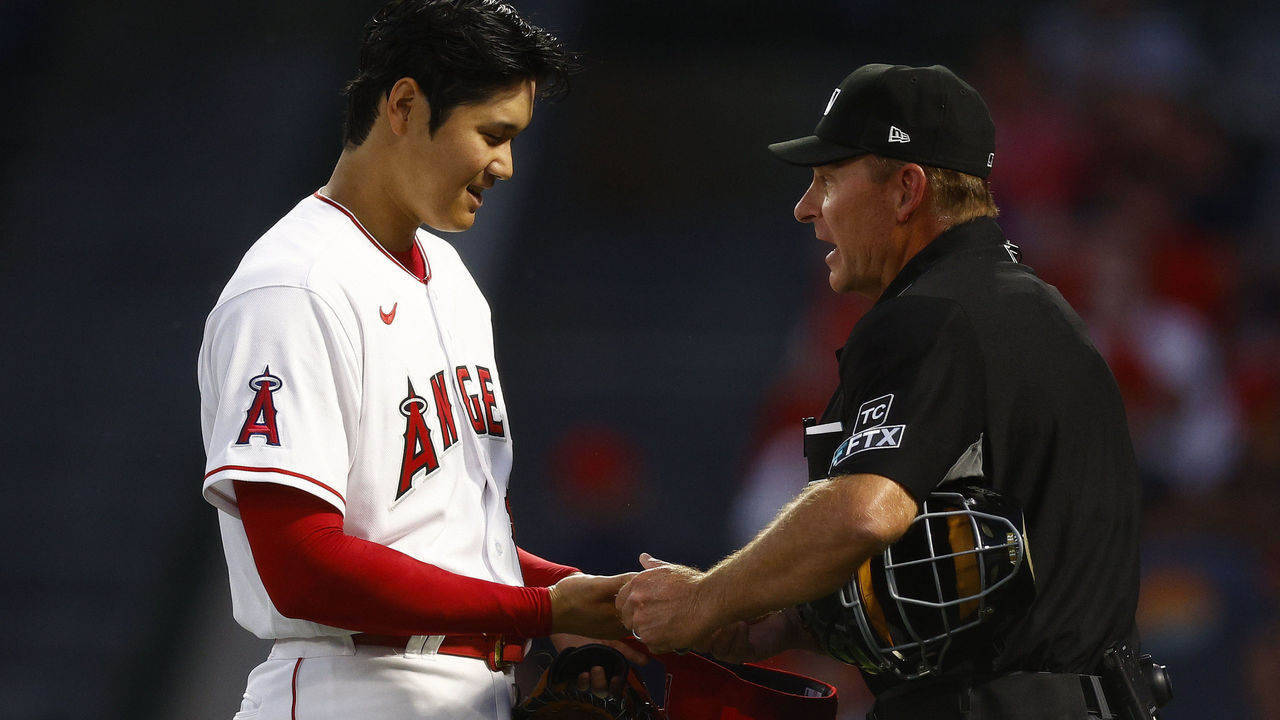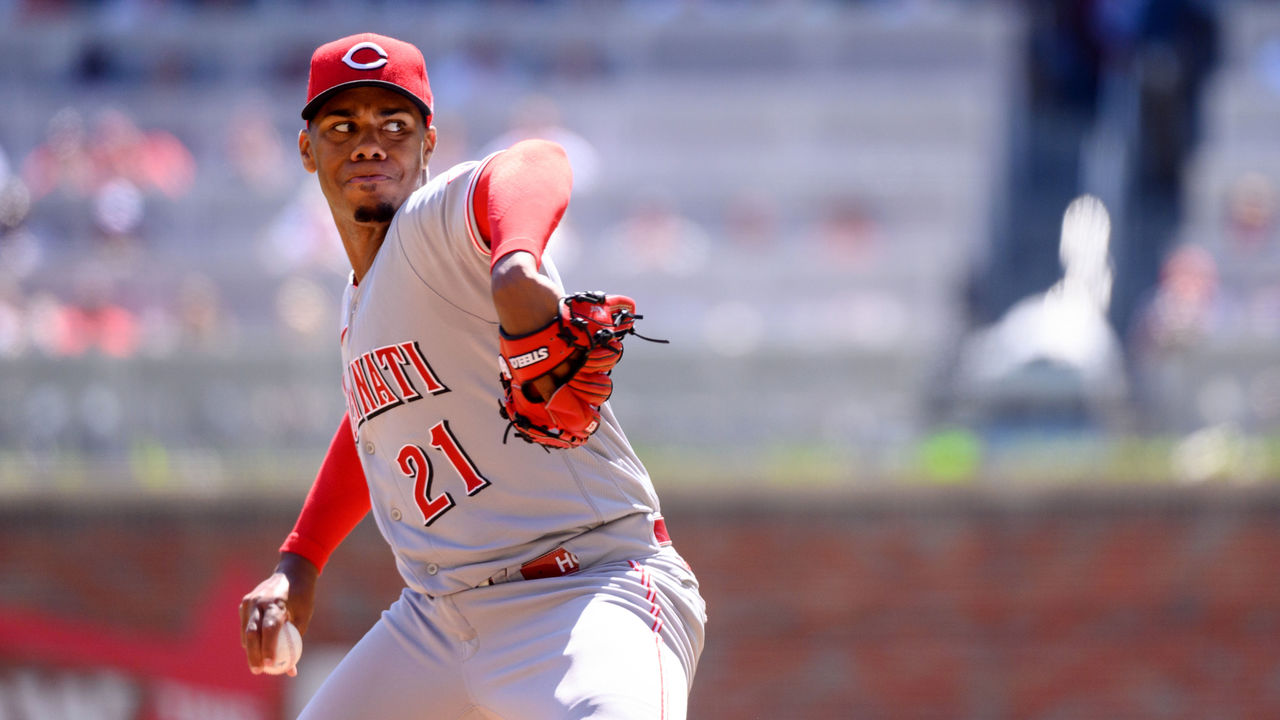First impressions of the new baseball season
Perhaps the most notable difference between the start of this season and previous ones is that some of the best young players actually made their clubs out of spring training - their service time isn't being suppressed. They aren't "working on their defense" down in Double-A.
Not all clubs are operating this way (hello, Pittsburgh), but a number of high-profile rookies broke spring training with the big clubs. Perhaps it was because of the prospect promotion incentive in the new collective bargaining agreement; perhaps it's simply because Bobby Witt Jr. and Julio Rodriguez are so good that doing anything else would be absurd.
But another, less heralded rookie also made the Opening Day roster: Steven Kwan in Cleveland.

While rookies like Witt and Rodriguez are elite prospects with rare physical tools, it was Kwan who had one of the best opening acts despite not being a regular on top-100 prospect lists.
In fact, Kwan is enjoying the best opening act of all time, and there's reason to believe he's legit. Not .700 batting average legit, but he's a potential on-base machine.
Kwan reached base nine consecutive times over a three-game period, a streak snapped Monday afternoon, but he responded later in the game with a bases-clearing triple to break it open as the Guardians scored 27 runs across two games against the Royals.
His .790 on-base percentage and 15 times on base after Sunday's game were the best marks ever through four games to start a career. He added a hit and two walks Tuesday in Cincinnati, which lowered his average to .667 and his OBP to .750.
Kwan's unlikely to hit .400 this year, but he possesses the underlying skills to be a high-average, high on-base outfielder. Through play Tuesday, Kwan has seen 115 pitches, swung 39 times, and has yet to swing and miss.
While he lacks elite power and speed, Kwan demonstrated elite bat-to-ball skills and a strong batting eye in the minors. Cleveland's fifth-round pick in 2018 out of Oregon State posted an elite 6.7% strikeout rate, .311 average, and .398 on-base mark last year in Triple-A. Cleveland might have found a top-of-the-order regular.
Buxton's MVP march begins?
We're a week in and everyone's already thinking it: "If Byron Buxton can stay healthy ..."
Buxton homered three times in the Twins' first three games, including somehow getting around on an elevated 100-mph fastball.
Byron Buxton turning on a 101 MPH fastball above the zone and pulling it into the third deck is the swing of the century holy cow pic.twitter.com/0OwTeOqyVo
— Jesse Thorn 🤷♂️ (@JesseThorn) April 10, 2022
The best player last year in terms of WAR per game (minimum 50 games) wasn't AL MVP Shohei Ohtani - it was Buxton. He accumulated 4.2 WAR - an excellent full season - in only 61 games. Extrapolate that over a full campaign and it's a 10-WAR season, peak Mike Trout-like production.
The key is health, of course. Buxton has played 100 games in a season once in his career (2017, when he suited up in 140).

He's always been an elite defensive center fielder and baserunner, but a swing adjustment helped him square up the ball at an elite level last year.
He stopped hitting weak pop-ups - his infield pop-up rate declined to 4% from 25% in 2020 (and a career mark of 14%) - and started driving the ball with his rare bat speed and raw power. That improvement carried over to spring training and into April.
Mets' new arms deliver
The Mets have already suffered some key pitching injuries.
Jacob deGrom - the best in the game - looked like he was in peak form this spring until he suffered a stress reaction in his right shoulder, which figures to sideline him for the season's first two months. The good news is that last season's elbow issues appear to be behind him.
On Monday night, starting pitcher Taijuan Walker left with a shoulder issue. It's not a great way to start a season full of NL East title aspirations.
The good news? Chris Bassitt was masterful in his Mets debut Saturday. His funky four-pitch mix and unusual motion made him an AL Cy Young contender last year until he suffered a terrifying facial fracture from a line drive in August. He returned for a couple of short starts in September, but was back to himself Saturday, throwing six shutout innings with only three hits and a walk allowed. He even blew a fastball by Juan Soto for one of his eight strikeouts.
And Tylor Megill, who was excellent as a rookie last year, stepped into deGrom's Opening Day spot and flashed improved velocity - his fastball averaged 96 mph - and bat-missing ability in five shutout innings.
The Mets can't afford to keep losing pitchers, but with Max Scherzer, Bassitt, Megill, and a healthy deGrom, their staff could be as good as anyone's in the second half.
Folding aces?
A number of frontline starters struggled in their first outings, which could perhaps be tied to reduced spring training preparation time due to the owners' lockout.
We don't want to overreact too much to any performance at the start of a season, but some indicators can be more troubling than others in small sample sizes and perhaps none more so than a pitcher's fastball velocity.
Throwing speeds can be expected to warm with the summer months, and velocity readings can vary from start to start. But fastball velocity readings can also stabilize relatively quickly.
In Julio Urias' opening start for the Dodgers in Colorado - in which he lasted only two innings - he averaged 92.3 mph on his fastball. He's never averaged below 93 mph for a season and sat at 94 mph in 2021.

Cleveland ace Shane Bieber was effective on Opening Day but averaged just 91.9 mph with his fastball, right around where he was in September last season after missing three months with a shoulder injury. For all of 2021, his average velocity was 92.9, and it was 94 during his 2020 Cy Young season. On Tuesday afternoon, he averaged 91.0 on 35 fastballs.
While cooler weather might play a role, other pitchers in the game didn't experience significant velocity decreases. Other top pitchers like Brandon Woodruff and Gerrit Cole struggled, but their velocity numbers weren't down. It's worth monitoring Urias and Bieber.
White Sox in trouble?
The Chicago White Sox were overwhelming favorites to win the AL Central to begin the season, but third baseman Yoan Moncada was placed on the injured list with an oblique strain a day before the campaign began, and that can be a pesky injury.
In the season opener, ace Lucas Giolito left with abdomen tightness and will miss at least two starts. The club already lost Lance Lynn for an extended time following spring knee surgery.

The White Sox have less pitching depth after letting Carlos Rodon walk without a qualifying offer and can't afford to be without two of their top three starters and Moncada for long. The division is gaining on them with the Twins and Tigers much improved, the Royals welcoming young talent, and the potential for Kwan and the Guardians to surprise.
Sticky situation
After beginning to enforce the rulebook ban on sticky stuff with between-innings checks of gloves and belts last summer, MLB ratcheted up its process this season with umpires now physically touching pitchers' fingertips between innings. After all, you can't remove Spider Tack from your fingertips easily (trust me, I know).
MLB first cracked down on foreign substances that increase spin last June. Less spin means less movement, fewer swings and misses, and more balls in play at a time of elevated strikeout rates - which rose every year since 2003 and peaked in 2019.

So what has the effect been?
The average fastball spin in the first week of last season was 2,322 RPMs (93.6 mph). The RPMs are down this season to 2,260, while velocity is slightly up (93.9), suggesting the policing efforts are working. While batters are hitting .232 through five days, like they were through the first week last year, the strikeout rate dipped from 25.3% in the first week last year to 23% this year.
Seeing Red
The Cincinnati Reds received much criticism for tearing down their major-league roster over the winter, but they have one of the more intriguing collections of young pitchers in the game.
In his MLB debut Sunday, 2017 No. 2 overall pick Hunter Greene averaged 99.9 mph on his fastball and exceeded 100 mph 20 times. The velocity has always garnered attention, but it's his slider development that might make him an immediate force. Under former pitching development director Kyle Boddy, the Reds focused in part on building better breaking balls in the minor leagues and made some of the greatest strikeout rate gains in affiliated baseball.

Nick Lodolo, another prized young arm with premium velocity and a big breaking ball, is set to debut Wednesday. And prospect Chase Petty, who was touching 100 mph in high school, is the prize of Cincinnati's return from the Sonny Gray trade to Minnesota.
Perhaps the Reds should have hung onto Gray, but they could have one of the most exciting staffs in the game in short order. As with Witt Jr., Kwan, and Rodriguez, they aren't manipulating service time.
Travis Sawchik is theScore's senior baseball writer.